Researchers Wu Ping and Guo Wei of the School of Electrical and Information Engineering of Yunnan University for Nationalities wrote in the 5th issue of "Electrical Technology" magazine in 2018 that since the reform and development, China's economy has developed rapidly and the demand for energy has continued to grow every year. The sustainable supply of energy is already a problem that must be faced by China's sustainable economic development.
At present, China's primary energy consumption structure is single, fossil energy is mainly coal, high-quality fossil energy is relatively insufficient, the proportion of electric energy in the terminal energy consumption structure is increasing, the external dependence of oil is increasing year by year, and the energy allocation method is not scientific.
In view of the above situation, this paper focuses on the current situation of power and energy in China, and discusses China's current energy problems and power problems (such as imbalance of power input, insufficient power grid development, weak long-distance transmission capacity, etc.), from long-distance transmission and power import. Analyze the development of electric vehicles and the intelligentization of power grids, and propose solutions to the current situation of China's power energy.
At the beginning of the 21st century, fossil energy, mainly coal, oil and natural gas, has become the mainstay of the world's energy supply, accounting for about 80% of the total global energy consumption [1], providing almost all transportation energy and 70% of power generation. non-renewable energy. The development and utilization of energy has promoted the development of human civilization. Modern industries, agriculture, and service industries all need huge energy sources to support them.
Energy has become a key factor in the sustainable development of modern society. In order to compete for limited oil and energy, the Middle East has erupted several wars in just a few decades. With the two oil crises, the era of cheap energy has ended. At present, it is impossible and impossible for developing countries to simply copy the economic development model of developed countries because they cannot obtain cheap energy from the international market.
As the world's largest developing country, China must rely on innovation, promote the transformation of development mode, follow the development path of its own national conditions, and achieve sustainable development.
1 China Energy ProfileChina's total energy resources are relatively abundant, but its per capita possession and quality resources are relatively small compared to other countries. Since the reform and opening up in 1978, with the rapid development of China's economy, the energy industry has developed rapidly and energy consumption has grown on a large scale. In the 1990s, it changed from an energy exporter to a pure energy importer.
At present, the sustainable supply of energy is more binding on the Chinese economy than in any previous period. Strengthening national energy cooperation, opening up energy sources in Africa and other places, and accelerating the change of the domestic energy supply single mode is the only way for China's sustainable economic development.
1.1 Analysis of China's energy advantages and disadvantages
China's fossil energy is mainly based on coal, and high-quality fossil energy is relatively insufficient. Although China's oil and gas fields are exploring earlier and there is still potential for future production, overall, there is still a large gap between oil and gas resources and China's economic and social development needs. Due to the large population, China's per capita fossil resources are much lower than the world average. The specific data is shown in Table 1 [1].
Table 1 World and China's per capita fossil resources in 2010
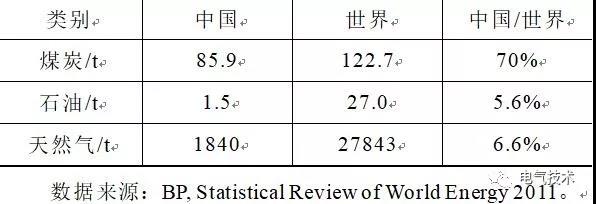
It is worth mentioning that China has great potential for renewable energy development. At present, the hydropower development volume is 540 million kW, ranking first in the world; the biomass resource available for annual use is 900 million tons of standard coal [2]; the northwest region is rich in wind energy resources; the southwest and southeast regions are rich in hydropower resources; The installed capacity of power generation can reach 3.45 billion kW.
The above data shows that the development of new energy in China has a certain scale, and the development of renewable and low-pollution energy has great potential in the future.
1.2 China Power Production
Since the reform and opening up in 1978, China's power generation capacity and power generation capacity have maintained rapid growth, and the average annual growth rate has exceeded the growth rate of energy production. By the end of 2012, China has surpassed the United States to become the world's largest power producer. The nation's power installed capacity reached 1.14 billion kW. Among them, hydropower installed capacity reached 249 million kW, ranking first in the world [3].
By the end of 2013, the total installed capacity of wind power in China reached 90,000 MW. The installed capacity of wind power in Mengdong, Jilin and Gansu has exceeded 30% of the load. Wind power has become an important power generation mode in China, and the development of wind power plants is The trend of China's power development in the future. Although the current development of new energy is booming, hydropower and thermal power are the foundations for China's power development in the future.
China's power production is dominated by thermal power, and there is a big difference between the power production structure and developed countries. At present, among the power generation structures of developed countries in the world, gas and nuclear power account for a large proportion, while China is dominated by coal power. From 1980 to 2010, China's power production structure has been significantly improved, as shown in Figure 1, Figure 2, respectively.
Figure 1 China's power generation installed structure in 1980

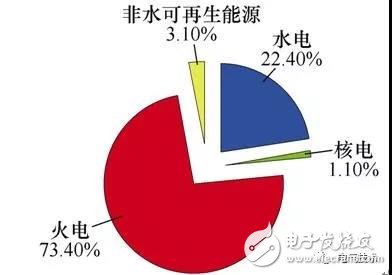
According to the above data provided by the China Electric Power Enterprise Association, compared with the more developed countries, China's power production structure is dominated by hydropower and coal power, and the proportion of clean energy power generation is relatively low. With the continuous depletion of fossil energy, increasing mining costs, and increasing pressure on international environmental protection, the proportion of nuclear power and non-water renewable resources in China's power production structure will increase further in the future, and the proportion of coal power will decline.
Based on the above analysis and related data, the structure of China's power generation installed in 2030 is predicted, as shown in Figure 3.
Figure 3 China's power generation installed structure in 2030
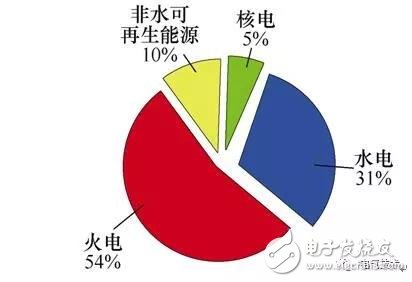
1.3 Major issues facing China's energy industry
Since the reform and opening up, China's energy industry has achieved remarkable achievements in just a few decades. However, China's energy industry is also facing many difficulties and challenges.
In general, the rapid development of the economy has intensified the contradiction between the continuous growth of energy demand and the non-renewability of fossil energy; the binding force of the environment has become increasingly prominent; the external dependence of energy, especially petroleum energy, has deepened, and the pressure for sustainable supply of energy has become increasingly important. The greater the distribution of energy resources and energy demand is seriously imbalanced. The following is a detailed analysis.
1) The problem of sustainable supply
In accordance with the "new three-step" strategic plan formulated by the Chinese government, a well-off society should be built in 2020; in 2050, modernization will be basically achieved. For a long time to come, the economy will maintain a steady and rapid growth rate. In other words, China's future demand for energy is still strong. Table 2 shows the prediction of China's future energy demand by domestic and foreign institutions [5].
Table 2 Forecast of China's future energy demand by domestic and foreign institutions
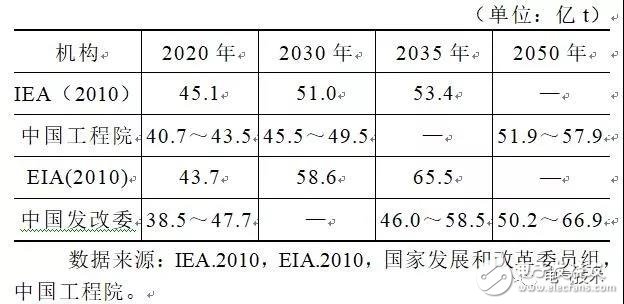
2) Unbalanced proportion of energy investment
Since the reform and opening up in 1978, China's power supply has been in a tight state for most of the time. The main reason is that the phenomenon of “re-issuing light supply†is serious. In other words, power investment has invested heavily in production for a long time, and the power grid investment is small. The construction of the power grid is seriously lagging behind. As an important way of energy transportation, the power grid lacks the long-distance transmission capacity of the power grid, and objectively increases the pressure on railway transportation. Forming such a strange phase, that is, "the power plant is everywhere, there is power outage everywhere." Figure 4 shows the proportion of power input in China in recent decades [6].
Figure 4 China's power and grid investment accounted for the proportion of power investment
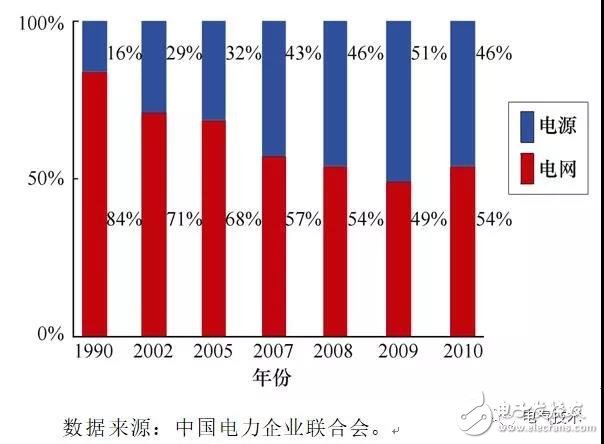
With the further development of China's economy, in the environment where the reverse distribution of energy is becoming more and more obvious, it is necessary to strengthen the construction of energy transportation. The allocation method shifts from the local balance type to the large-scale optimization configuration type, especially the proportion of electricity in China's terminal energy source. Under the trend of increasing, increasing the investment in power grids and solving the problem of insufficient long-distance transmission capacity in China as soon as possible is of great significance to the sustainable development of China's economy.
In the future, with the further development of China's economy, the demand for energy in economically developed regions will further increase substantially. The energy production center will gradually move westward with the deep development of energy, and the reverse distribution of energy production and energy consumption will become more apparent. [7]. In the future, China's energy industry will inevitably present a pattern of “Northern Coal South Transportationâ€, “West-East Gas Transmissionâ€, “West-to-East Power Transmission†and “Northern Oil South Transportationâ€.
2 Analysis of China's power energy problem solving methodsElectricity is a secondary energy source that is clean, efficient, easy to use, safe, and has the widest range of applications. Electricity can be easily converted into sound, light, heat, force and electrophysical and electrochemical effects through various electrical appliances, and all known primary energy sources can be converted into electricity.
Electricity can be transmitted at the speed of light in the wire and infinitely divided in the distribution system. The incompatibility of these other sources of electricity makes it the most widely used energy source in modern society. The key to solving the energy problem is how to solve the power problem.
2.1 Common development of transmission and coal transportation
China's traditional energy transportation mode is mainly the coal transportation method, that is, the coal is transported to the load center by means of railway, sea transportation, and intermodal transportation, and then the power plant in the load center is connected to the power grid. The load center is mainly concentrated in the eastern region. Over the years, due to the burning of a large amount of coal in the central and eastern regions, environmental problems such as acid rain and haze have become more serious. The environment in the eastern region has not allowed further development of thermal power plants.
The transmission method is to build a large thermal power plant in the coal producing area, and deliver the power to the load center through the UHV transmission network. At the same time, the supercritical units in large thermal power plants are environmentally friendly at the technical level, which is no worse than the environmental protection of natural gas units, and has less impact on the environment. Realizing the on-site conversion of coal-fired power can give play to the resource advantages of the western region, and the key point is that the transmission has less adverse impact on the environment than the coal.
In terms of transportation costs, according to the 2011 coal price level, the economics of transmission methods are better than the coal transportation methods. Figure 5 and Figure 6 are schematic diagrams of two energy transportation modes.
Figure 5 Power transmission method

Figure 6 Coal handling method

In recent years, with the high price of coal and transportation, and the maturity of power grid technology, the grid structure and transmission capacity have been greatly improved, and the economic transmission distance has been greatly improved. Considering safety, environment, economy, technology, people's livelihood, land resources and other aspects, large-scale power plants will be built in coal-rich areas, and large-scale energy bases will gradually move westward and northward, farther away from the load center. For a long period of time, the construction and operation of China's power grid, large-capacity, long-distance transmission is imperative].
2.2 Vigorously develop electric vehicles
With the increasing global resources, energy and environmental issues, electric vehicles have gradually replaced traditional energy vehicles with their high energy efficiency and environmental friendliness, bringing about changes in the entire industry [9]. The development of electric vehicles, to achieve the "electricity-based oil" energy consumption model, reduce the proportion of oil in the terminal energy consumption, reduce oil dependence on foreign countries, in order to protect national energy security.
Energy supply is an important part of the electric vehicle industry chain. There are two energy supply modes for electric vehicles, one is the charging mode and the other is the power switching mode. The charging mode can be simply understood as the battery is dead, and it is charged by the charging post. The power change mode can be understood as the direct replacement of the battery pack of the electric vehicle to achieve the purpose of charging it [10]. There are three charging methods, namely wired charging, wireless charging and battery replacement [11].
Regardless of the mode, the construction of charging and replacing facilities is necessary. Due to the randomness of the charging load of electric vehicles in time and space, harmonic pollution, large peak-to-valley difference of power grids, overload of power grid equipment, etc., the development of charging and replacing networks for electric vehicles is not just enough. The charging and replacement stations and charging piles must also be equipped with upgraded distribution networks. At the same time, the large centralized charging station in the charging and replacing power grid can also be used as the city's energy storage power station and emergency power supply.
2.3 Vigorously promote power import
Russia, Mongolia, Kazakhstan and other countries bordering on the north of China, these countries have abundant power resources such as coal resources, wind energy and water resources. In Russia in particular, polar wind energy exceeds 55 trillion kW ̇h/year, and the water energy in the Far East exceeds 110 million kW ̇h/year, and coal reserves exceed 1.2 trillion tons. Investing in the construction of thermal power stations, hydropower stations and wind power stations in the above-mentioned countries can provide considerable power and energy to China every year [12].
The south of China borders Thailand, Myanmar, Vietnam, Laos and other countries. These countries have abundant power generation resources. Among them, Myanmar, Laos and Indonesia are rich in water resources. Wind energy resources are mainly concentrated in the Philippines, Vietnam and Indonesia. It is the richest in the Philippines, Thailand and Malaysia [13].
At the same time, the power industry in these countries is relatively backward, and the proportion of imports in the total power supply is large. In these countries, it is of great significance to improve the domestic energy supply structure by investing in large hydropower plants, thermal power plants, and new energy power plants to obtain clean electric energy.
2.4 Smart grid
From the current stage of development, the development of smart grids in China and developed countries are at the same starting line. Building a smart and strong power grid provides a good opportunity for China to achieve power grid technology leapfrogging and occupying the commanding heights of international power grid technology. At present, the focus of grid intelligence is to promote the intelligentization of all aspects of the grid [14], as shown in Figure 7.
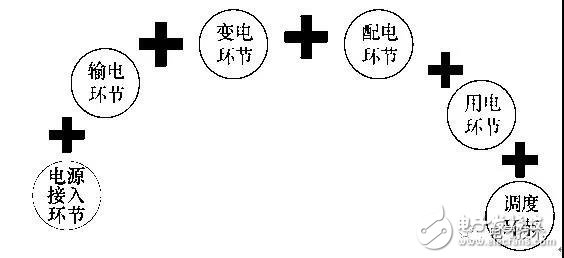
Figure 7 Key aspects of grid intelligence
Compared with other countries, the development of smart grids in China is characterized by the ability of power supply access to adapt to different types of clean energy. It is aimed at the intermittent, uncertainties of wind power, solar energy, tidal energy and other clean energy generation. The grid realizes the complementarity and adjustment of different energy sources and promotes the efficient use of clean energy.
The combination of distributed photovoltaic, wind power plants and smart grids to meet the balance of power demand is the future development trend of China's power, and is also strongly promoted by the Chinese government. The electricity consumption link is used to construct a power service system, and a two-way interactive power service is fully launched to realize real-time interaction between the user and the power grid. The electric vehicle intelligent power exchange service network will be built to realize the two-way energy exchange between the automobile and the power grid, and finally meet the requirements of new electric power services such as electric vehicles.
3 ConclusionAs the world's second largest economy, the sustainable development of China's economy is inseparable from the sustainable supply of energy. At present, China's energy situation is not optimistic, foreign oil dependence is rising year by year, and environmental protection is increasingly binding on China's energy development. In the energy structure, coal has long dominated and the level of electrification is not high.
The energy structure needs to be shifted from high-carbon to low-carbon. Energy use must be shifted from extensive to economical, and energy allocation needs to be shifted from local balance to large-scale optimization. Strengthen the construction of long-distance transmission facilities; vigorously develop electric vehicles to reduce emissions; strengthen energy cooperation with neighboring countries and vigorously develop power imports. These measures are of great significance for optimizing China's energy structure, saving energy and reducing emissions, alleviating environmental pressures, and promoting sustainable social and economic development.
Silicone Glass Fiber Tube,Pre Insulated Tube,Braided Shield Sleeve,Wire Shielding Sleeve
Shenzhen Huiyunhai Tech.Co., Ltd. , https://www.cablesleevefactory.com